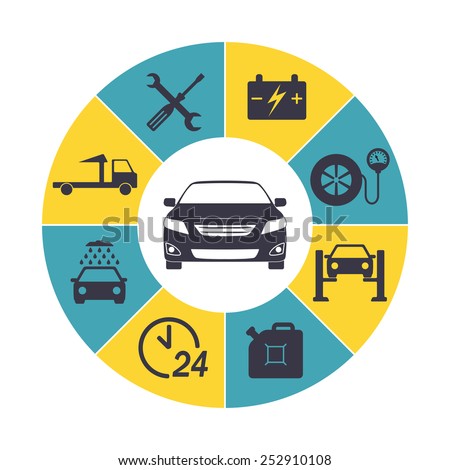Checking Out The Genuine Interpretation Of Your Cars And Truck'S Warning Lights
Checking Out The Genuine Interpretation Of Your Cars And Truck'S Warning Lights
Blog Article
Content Produce By-Kane Heath
When you're behind the wheel, those beautiful warning lights on your control panel can be a little bit complicated. Do you know what they're attempting to tell you concerning your auto's health? Recognizing the value of these lights is vital for your safety and the durability of your automobile. So, the next time among those lights pops up, would not you want to understand its message precisely and take the essential steps to resolve it?
Common Warning Lights and Interpretations
Identify typical warning lights in your auto and comprehend their meanings to ensure secure driving.
One of the most regular warning lights include the check engine light, which indicates issues with the engine or discharges system. If this light begins, it's critical to have your lorry examined quickly.
The oil stress advising light shows reduced oil stress, needing immediate focus to stop engine damages.
https://www.autoserviceworld.com/heres-how-to-improve-customer-relations/ flashing battery light could suggest a malfunctioning charging system, possibly leaving you stranded otherwise resolved.
The tire pressure surveillance system (TPMS) light alerts you to reduced tire pressure, influencing automobile stability and fuel effectiveness. Overlooking this could lead to unsafe driving conditions.
The abdominal muscle light indicates a trouble with the anti-lock braking system, jeopardizing your ability to stop promptly in emergency situations.
Lastly, the coolant temperature level warning light warns of engine overheating, which can result in serious damages if not resolved swiftly.
Recognizing these typical warning lights will certainly assist you attend to problems promptly and maintain secure driving conditions.
Significance of Prompt Attention
Recognizing the usual warning lights in your auto is only the primary step; the value of promptly addressing these warnings can not be emphasized sufficient to guarantee your safety and security when traveling.
When a caution light illuminates on your control panel, it's your car's way of communicating a possible concern that requires interest. Overlooking these cautions can cause much more serious troubles later on, endangering your safety and potentially costing you more out of commission.
Prompt focus to warning lights can protect against malfunctions and mishaps. For example, a blinking check engine light could show a misfire that, if left neglected, could trigger damage to the catalytic converter. Addressing this quickly can conserve you from a pricey repair work.
Likewise, a brake system alerting light might signify reduced brake fluid or worn brake pads, vital components for your safety when driving.
DIY Troubleshooting Tips
If you see a caution light on your control panel, there are a couple of do it yourself troubleshooting pointers you can attempt prior to looking for specialist help.
The initial step is to consult your vehicle's guidebook to understand what the particular caution light indicates. Often the issue can be as basic as a loosened gas cap causing the check engine light. Tightening up the gas cap might deal with the trouble.
Another usual problem is a low battery, which can activate different warning lights. Inspecting mouse click the next web site for rust and ensuring they're secure could take care of the problem.
If a caution light lingers, you can try resetting it by detaching the auto's battery for a couple of minutes and after that reconnecting it. Additionally, examining https://keeganulbsi.blog5star.com/30625511/release-your-flat-tire-repair-service-trip-by-protecting-the-necessary-devices-and-executing-the-very-first-critical-activity-continue-reading-for-guidance-on-achieving-a-smooth-return-to-the-road , such as oil, coolant, and brake liquid, can assist repair alerting lights associated with these systems.
Final thought
Finally, recognizing your cars and truck's warning lights is vital for maintaining your automobile running smoothly and safely. By immediately dealing with these alerts and recognizing what they indicate, you can stay clear of pricey repairs and potential malfunctions.
Remember to consult your automobile's manual for specific details on each warning light and take action appropriately to make sure a trouble-free driving experience.
Keep notified, stay safe on the road!
